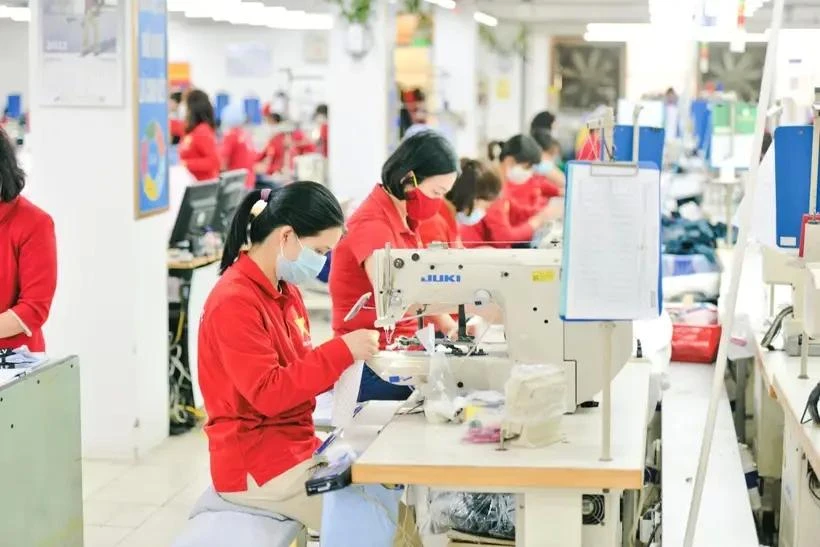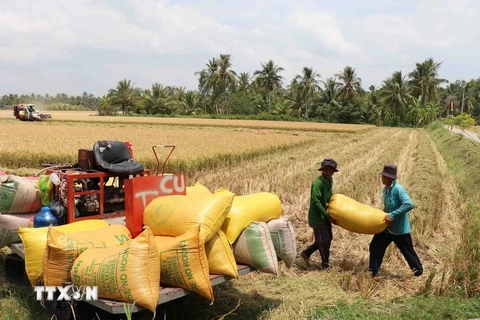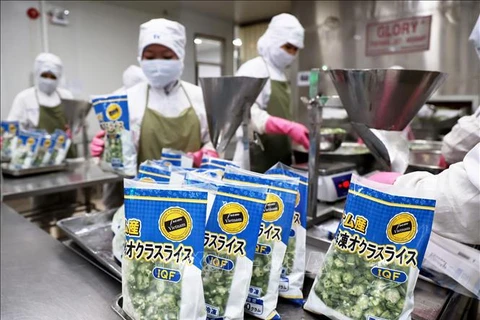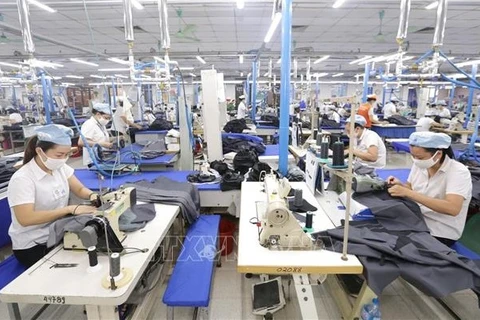
Hanoi (VNA) – Vietnamese enterprises need to meet quality requirements and rules of origin, increase value-added content, and diversify markets, as production and business activities are forecast to face many challenges due to the unpredictable global economy and climate change, despite positive export results in the early months of this year.
From January to April, Vietnam posted a total import-export revenue of 238.88 billion USD, an increase of 15.2% over the same period last year. Of which, overseas shipments reached more than 123 billion USD, up 15% year-on-year while the import turnover was reported at over 115 billion USD, up 15.4% year-on-year. In particular, the country had 21 items with export turnover of more than 1 billion USD, accounting for 86.4% of the total export turnover.
It is noteworthy that shipments to major markets such as the US, the EU, and China recorded double-digit growth. The US is Vietnam's largest export market with an estimated turnover of 34.1 billion USD, up 19.1% compared to the same period last year. Exports to China reached 18 billion USD, a year-on-year rise of 14.4% while those to the EU and the Republic of Korea hit 16.4 billion USD and 8.4 billion USD, up 15% and 10.2%, respectively.
General Director of Garment 10 Joint Stock Company (Garco 10) Than Duc Viet said that the company has received more orders in the first quarter of 2024 than last year’s corresponding period. Notably, positive signs have been recorded in order volume for the second quarter and the first half of the third quarter, he added.
Gia Dinh Group Joint Stock Company is in the same situation. The number of orders that it received have increased by over 30%, ensuring employment for workers until September or October. Along with tapping traditional markets like the US and EU, Gia Dinh Group has expanded its coverage to Japan and the Republic of Korea, and explored niche markets such as South Africa and Mexico.
Vegetable and fruit export businesses like Ameii Vietnam Joint Stock Company, which used to focus on traditional markets such as the EU, the US and China, have shifted to seeking orders from the Middle East and South Asia.
Despite rosy prospects, businesses are also facing significant challenges in their export activities. For instance, a series of regulations regarding eco-friendly products, expanded responsibilities of manufacturers, supply chain traceability, and requirements for reducing carbon emissions for products have been enforced in the EU market. Countries exporting to this market must comply with them.
Experts recommend that businesses should maximise the potential of markets where Vietnam has signed Free Trade Agreements (FTAs). New markets such as Africa, the Middle East, and South America should be tapped, they noted.
According to economic expert Dinh Trong Thinh, Vietnam has participated in 19 bilateral and multilateral FTAs with most economies in the world, of which 16 have been effective with over 60 partners, covering the five continents, which account for nearly 90% of global GDP.
To achieve the export growth target for 2024, the Ministry of Industry and Trade (MoIT) is striving to implement solutions, including efforts to expand FTA negotiations, realise incentives of signed agreements and innovate trade promotion activities, said Tran Thanh Hai, Deputy Director of Foreign Trade Agency under the ministry./.






















